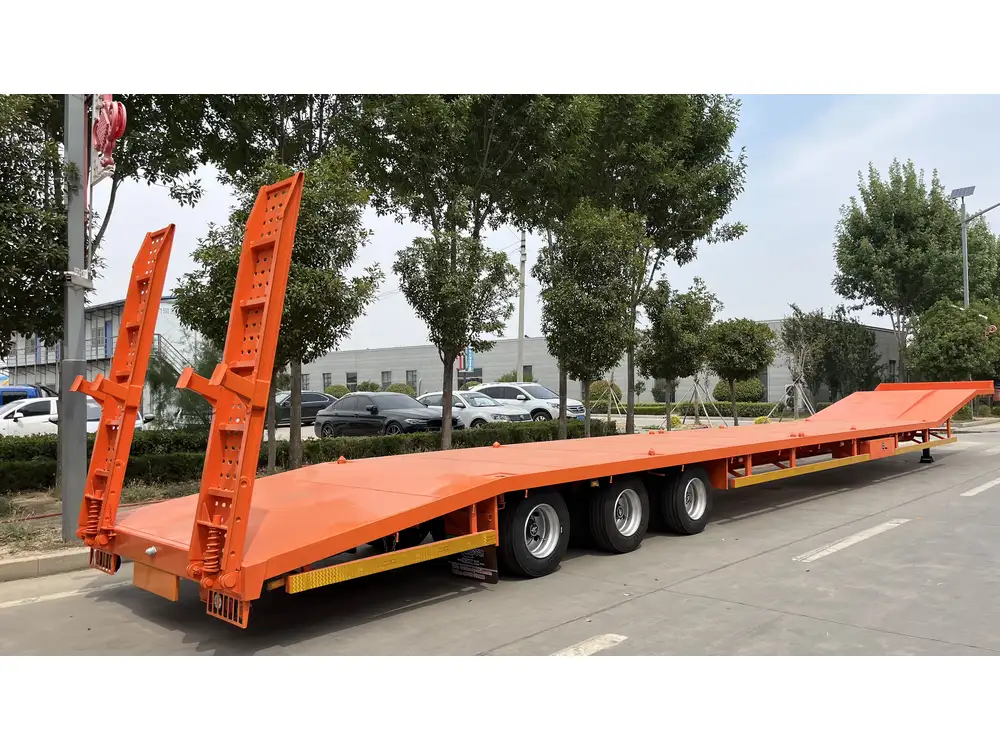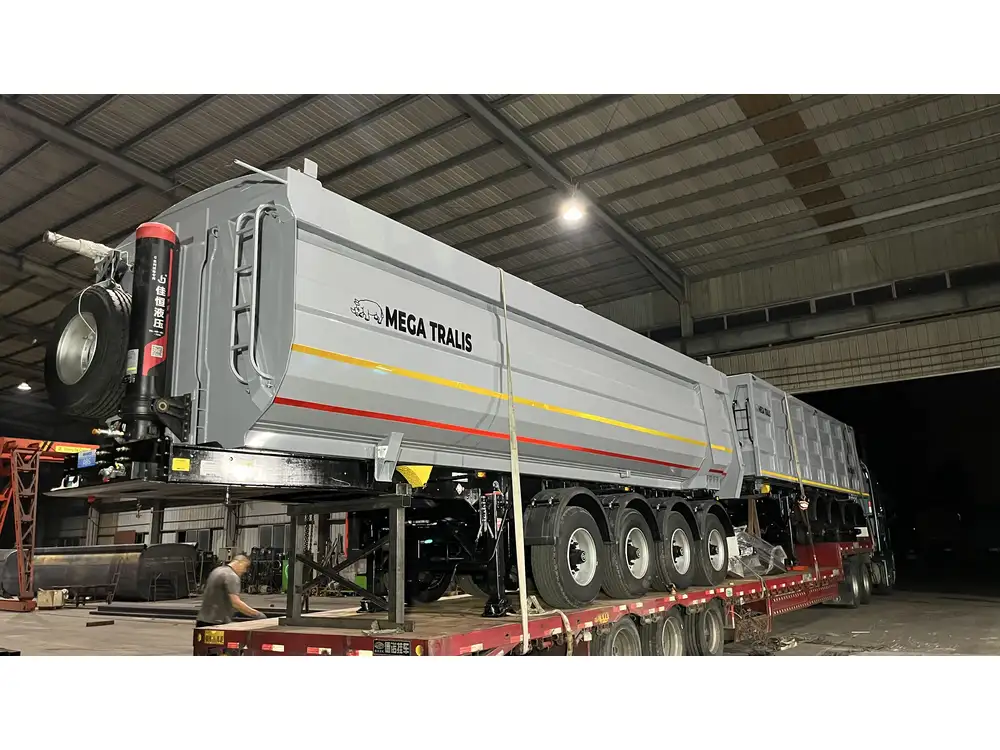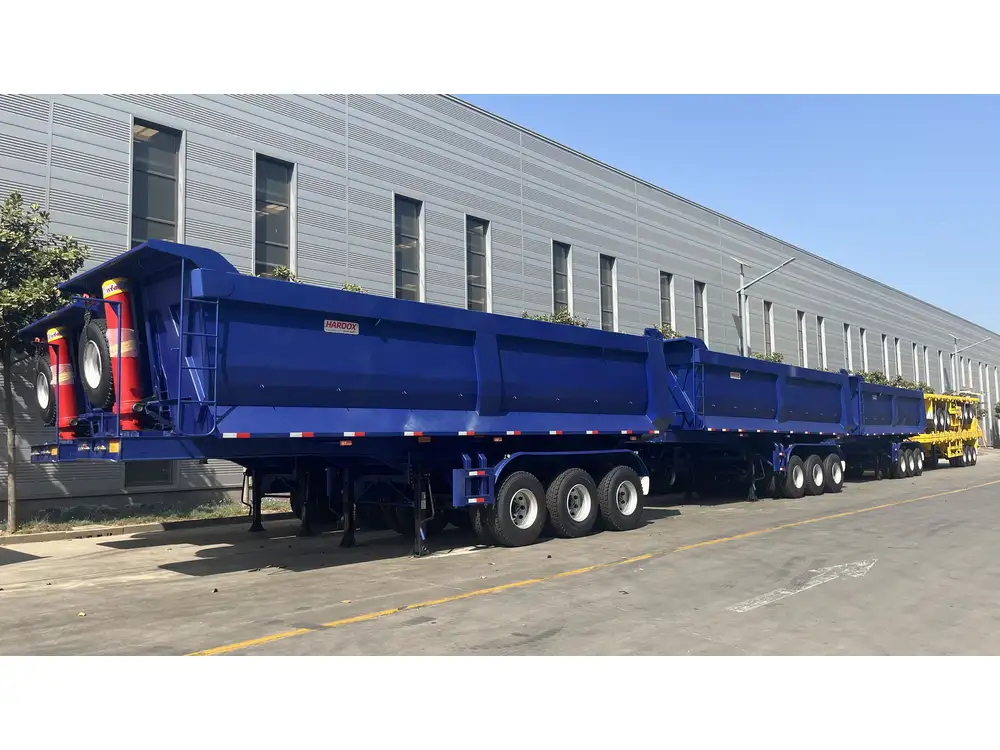Building a utility dump trailer can be a rewarding endeavor for anyone needing a reliable, versatile vehicle for transporting materials. This guide will walk you through the entire process, from understanding the essential components to step-by-step instructions on assembly. By the end, you will have the knowledge needed to create a dump trailer that meets your specific needs.
Table of Contents
- Understanding Utility Dump Trailers
- 1.1 Definition and Purpose
- 1.2 Key Features
- Components of a Utility Dump Trailer
- 2.1 Chassis and Frame
- 2.2 Axles and Suspension
- 2.3 Dump Bed
- 2.4 Hydraulic System
- 2.5 Wheels and Tires
- 2.6 Electrical System
- Planning Your Build
- 3.1 Designing Your Dump Trailer
- 3.2 Material Selection
- Tools Required for Construction
- Step-by-Step Construction Process
- 5.1 Creating the Chassis
- 5.2 Assembling the Frame
- 5.3 Installing Axles and Suspension
- 5.4 Building the Dump Bed
- 5.5 Integrating the Hydraulic System
- 5.6 Final Assembly and Outfitting
- Safety Considerations
- Maintenance Tips
- Conclusion
1. Understanding Utility Dump Trailers

1.1 Definition and Purpose
A utility dump trailer is a specialized type of trailer designed to transport loose materials such as gravel, soil, debris, and other construction supplies. Its distinguishing feature is the ability to tilt its bed, allowing for easy unloading of contents at construction sites, landscaping jobs, and other locations.
1.2 Key Features
- Versatile Use: Ideal for personal and commercial projects.
- Hydraulic Dumping Mechanism: Facilitates efficient unloading.
- Durable Construction: Built to withstand demanding conditions.
2. Components of a Utility Dump Trailer

2.1 Chassis and Frame
The chassis is the backbone of your utility dump trailer. It must be strong enough to support the load and provide stability during transport.
2.2 Axles and Suspension
The axles determine load capacity and stability. Choosing the right suspension system is vital for a smooth ride and reduced wear on the trailer and tow vehicle.
2.3 Dump Bed
The dump bed is the area where materials are loaded. Its construction material greatly influences its weight capacity and longevity.

2.4 Hydraulic System
A hydraulic system is essential for raising the dump bed. Understanding the cylinder pressure and hydraulics involved is critical to ensure safe and efficient operation.
2.5 Wheels and Tires
Wheels and tires have to be selected based on load capacity, terrain, and intended usage. Proper sizing ensures safety and optimal performance.
2.6 Electrical System
In trailers with electric brakes or hydraulic lifts, a reliable electrical system is crucial for operation. Understanding wiring diagrams and systems is a must.

3. Planning Your Build
3.1 Designing Your Dump Trailer
Before diving into construction, sketch out your design. Consider dimensions based on your needs, including the size of the dump bed and the overall trailer length. Reach out to online resources or software that can assist in creating detailed plans.
Example Design Table
| Component | Measurement | Notes |
|---|---|---|
| Frame Length | 10 feet | Standard for utility use |
| Dump Bed Length | 8 feet | Accommodates large loads |
| Overall Width | 6 feet | Fits standard lanes |
| Height from Ground | 2.5 feet | Good clearance for uneven terrains |

3.2 Material Selection
Select materials based on strength, weight, and corrosion resistance. Common materials include:
- Steel: Strong and durable; best for heavy-duty applications.
- Aluminum: Lightweight; ideal for reducing overall trailer weight.
- Wood: Often used for the bed; ensures cost-effectiveness but requires maintenance.
4. Tools Required for Construction
To build your utility dump trailer, you will need:
- Welding Equipment: MIG or TIG welder.
- Hand Tools: Wrenches, screwdrivers, and pliers.
- Power Tools: Angle grinder, drill, and saw.
- Safety Gear: Gloves, goggles, and ear protection.
- Measuring Tools: Tape measure, square, and level.
5. Step-by-Step Construction Process

5.1 Creating the Chassis
- Cut the Steel Tubing: Based on your design, cut the frame from square or rectangular steel tubing.
- Assemble the Frame: Weld the pieces together to form a rectangular frame.
- Reinforce Joins: Use additional welding to strengthen joints where stress will be concentrated.
5.2 Assembling the Frame
- Attach Cross Members: Place cross members evenly across the chassis for added support.
- Ensure Level: Use a level to check that the frame is flat and straight.
5.3 Installing Axles and Suspension
- Position Axles: Determine the placement according to weight distribution.
- Install Suspension System: Securely attach the suspension components to both the frame and axles.

5.4 Building the Dump Bed
- Cut Materials for Bed: Use steel sheets for heavy-duty applications.
- Weld the Bed Together: Create a rectangular box, ensuring seams are strong.
- Attach to Frame: Secure the dump bed to the chassis using bolts or welds.
5.5 Integrating the Hydraulic System
- Mount Hydraulic Cylinder: Position it at the front of the dump bed.
- Connect Hydraulic Lines: Ensure there are no leaks and that connections are secure.
- Test Hydraulic Lift: Before final assembly, run tests to ensure smooth operation.
5.6 Final Assembly and Outfitting
- Install the Electrical System: Connect the wiring for brakes and hydraulic functions.
- Add Wheels and Tires: Mount the wheels securely, ensuring correct torque on lug nuts.
- Finish with Paint and Labels: Protect against corrosion and add safety labels as necessary.

6. Safety Considerations
While constructing your utility dump trailer, always prioritize safety. Regularly check equipment and tools for functionality. Wear appropriate safety gear—helmets, gloves, and safety goggles are essential. Adhere to weight limits and ensure proper formation and light attachment to your towing vehicle.
7. Maintenance Tips
Once your utility dump trailer is built, keeping it well-maintained extends its lifespan. Here are some tips:
- Regular Inspections: Check for rust, wear, and hydraulic fluid levels.
- Clean the Dump Bed: Keep it free from residual materials to prevent corrosion.
- Lubricate Moving Parts: Apply grease to hinges and connections regularly.
- Storage: Store your trailer in a dry area to reduce exposure to the elements.
8. Conclusion
Building a utility dump trailer is a challenging yet fulfilling project that culminates in a valuable tool for transportation and hauling. By following this guide, you can create a durable, functional trailer tailored to your needs. Remember to utilize proper safety practices, choose quality materials, and conduct regular maintenance to ensure longevity and performance. With attention to detail and careful planning, your utility dump trailer can serve you well for years to come.



